Poverty is imaginatively appraised, yet the poor remain poor
Poverty rates are critical indicators of deprivation within an economy

Poverty is a dire condition for any individual, with far-reaching consequences recognised across cultures over centuries. Prophet Muhammad (PBUH) sought refuge from it, warning about its consequences, stating, "Poverty almost leads to disbelief." Ancient philosophers offered varied perspectives: Socrates viewed it as "a state of meanness, viciousness and discontent", while Aristotle described it as "the parent of revolution and crimes". Despite humanity's progress, poverty persists, with over a billion people still living in destitution today.
The UN defines poverty as severe deprivation of basic human needs, including food, clean drinking water, sanitation, healthcare, shelter, education and information. Poverty rates are critical indicators of deprivation within an economy and reflect the success or failure of government policies.
Powerful interests influence how poverty is expressed, whether it becomes a national priority and which mitigation policies are adopted. Experts, policymakers and political elites indeed categorise, stigmatise and neutralise the poor through analyses that obscure the political nature of social and economic inequality (O'Connor, 2001:12). Moreover, how financial and economic managers present poverty to political decision-makers certainly matters more than the problem itself.
Laderchi et al (2003) classify poverty into four key segments: Monetary Poverty – defined by income levels or material consumption. Capability Poverty – when individuals fail to achieve their potential due to a lack of resources or opportunities. Social Exclusion Poverty – when individuals or groups face barriers to entry in society. Participatory Poverty – engaging the poor in understanding poverty and seeking solutions.
The monetary poverty approach identifies people's need for basic life necessities. The income-based method measures a person's ability to earn enough to satisfy basic needs. This method is arguably better suited for middle-income countries like Pakistan but is not followed.
Instead, Pakistan uses a consumption-based approach, which some consider more appropriate for low-income countries. This method determines minimum welfare levels based on a daily food basket providing 2,350 calories and allowances for essential non-food needs. The debate over which method better represents economic distress remains unresolved, as they appear to be two faces of the same coin – different approaches to measuring the same fundamental problem.
Governments have made efforts towards poverty reduction through policy interventions supported by international donors. However, while these efforts have seen some success, they have not significantly impacted all segments of poverty – a persistent challenge. In 2013-14, Pakistan updated its poverty measures from a nutritional inadequacy model to the Cost of Basic Needs (CBN) method. The poverty line was set at Rs3,030/month per adult, classifying 29.5% (55 million people) as poor, an increase from the previous estimate of 9.3% (17 million). This revealed an underestimation of 38 million people. If Pakistan updated its method today, a similar situation would likely arise.
Pakistan's latest national poverty line was set at Rs3,757/month (Rs124/day) per adult in 2018-19, placing 21.5% of the population below the poverty line. This figure however, has not been updated in five years. If adjusted for the inflation factor (estimated at 15% pa), the revised poverty line would approach Rs7,562/month in 2023-24. An underestimation of current poverty rates that would also disrupts the outcomes of the Uraan Pakistan Plan 2024-29.
The World Bank uses an income-based method, setting the international poverty rate at $2.15/day (Rs596/day) per person. This measures potential consumption rather than actual spending, thus avoiding distortion due to local preferences. Studies suggest income-based measures tend to overstate poverty compared to consumption-based measures: Meyer and Sullivan (2009) showed that consumption measures reveal larger declines in poverty over time compared to income measures – perhaps making it less burdensome for governments to maintain statistically lower poverty rates without necessarily alleviating real suffering.
The CBN method uniformly categorises all individuals below the poverty line, without accounting for variations within this group. However, a PIDE study (2021) introduced five distinct bands to capture this variation, and the people fall into these bands: Ultra-Poor 5.5% (50-75% below poverty line), Poor 16% (75-100%), Vulnerable Poor 20% (100-125%), Quasi-Poor 37.2% (125-200%), and Non-Poor 21.4% (above 200%). This revealed an unsettling reality: 78.6% of Pakistan's population fluctuates between ultra-poor and quasi-poor bands – at constant risk of falling into deeper poverty due to adverse circumstances. The remaining 21.4% are non-poor, living on just Rs247/day per adult in 2018/19 prices – a modest elevation above poverty line.
How would a poor person prefer to be classified? As consumption-poor at Rs124/day under CBN or as income-poor at Rs596/day under the World Bank's standard? Slesnick (2001) observed that consumption-poor households were less educated, owned fewer assets and spent a larger share of their income on necessities than income-poor individuals. Clearly, most would prefer being classified as income-poor with Rs596/day rather than struggling with Rs124/day under CBN measures. This highlights the fundamental dilemma of poverty: whether to allocate resources for welfare or elsewhere, provided there is money to spare.
Unfortunately, technical aspects of poverty measurement and eligibility for assistance rarely surface in national discourse. Researchers and policymakers may debate whether to justify CBN over income based methods or to create a hybrid model. Aprea et al (2023) suggested the prevailing view that income and consumption should be considered jointly in poverty measurement. However, no matter how one defines poverty, people living in poverty remain in poverty. Regardless of definitions or methods used to measure it, those living in poverty remain trapped in it unless fundamental changes occur.
While millions remain below the poverty line, the government has alleviated the hardship of 342 legislators by raising their salaries from Rs5,817/day to Rs17,063/day, placing an additional annual burden of Rs4.104 billion on the national exchequer. The proposed increase for 96 senators is being approved, while the cabinet size is already doubled, even more burdensome for the country in its economic quagmire.
If lawmakers deserve such relief though they are not impoverished, surely Pakistan's poorest citizens deserve an immediate update in national poverty line and meaningful increase in financial assistance. Or is it too much to ask? The question remains whether the political will exists to address this fundamental inequity.

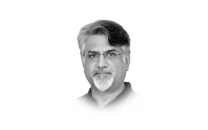
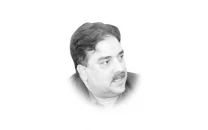

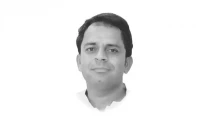
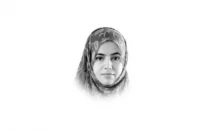
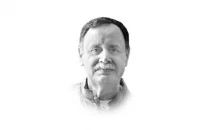


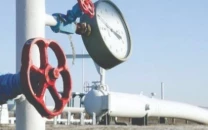
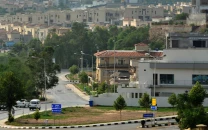



COMMENTS
Comments are moderated and generally will be posted if they are on-topic and not abusive.
For more information, please see our Comments FAQ